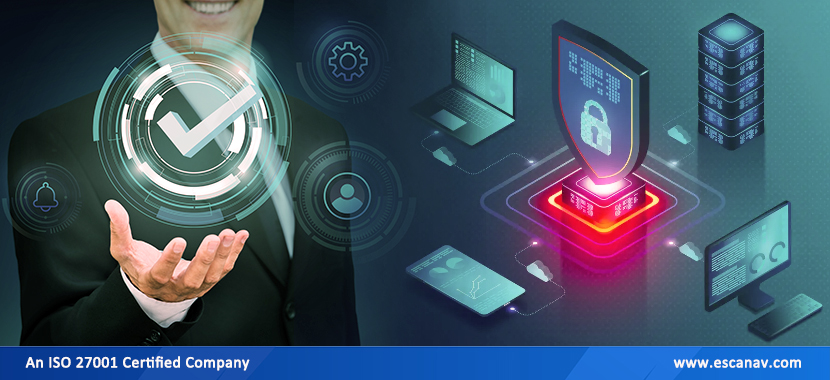In making a decision about an EDR solution, consider eScan The following factors should be considered when it comes to endpoint security:
Ensure IT Strategy Alignment
When selecting a technology, consider the features and abilities of each EDR solution carefully. Integrate the choice of a vendor with current security technology investments and the business’s overall IT strategy. Take into account a cloud-native solution, which provides scalability, cost-benefit analysis, and best-in-class features and performance.
Make Things Easier
The best EDR solutions include additional security modules that can be turned on from the same dashboard and platform. It provides enhanced capabilities in one solution and simplifies administration for Security Operation Centres (SOCs).
It is also being observed that EDR technology is evolving into Extended Detection & Response (XDR) solutions, which cover more security domains and cover multiple security products holistically. As a result, cybersecurity incidents can be orchestrated, automated, and responded to faster, and the Mean Time to Detect (MTTD) and Mean Time to Respond (MTTR) to cyberattacks can be reduced.
Look at Integration
The vendor must ensure efficient sensor rollout and computing resources required to run the sensor without adversely affecting user experience.
The EDR solution should also integrate with other security controls to become an integral part of a more comprehensive security operations centre. Ensure that you cover all operating systems, including Windows, Mac, iOS, Linux, and Android, to prevent threats from finding a way in.
Leverage Automation
Organizing a team to implement and manage the EDR solution will require funding and resources, so keep that in mind. The volume of warnings that an EDR solution produces and the ongoing fine-tuning of the security rules to extract useful data from the alerts are two issues that come with running an EDR solution.
EDR solutions ought to support automatic threat containment and mitigation actions as part of the incident investigation. For something to be extremely effective, great planning and consideration are required. When deployed incorrectly, it can negatively impact user experience and generate a large number of IT support tickets.
The volume of warnings that an EDR solution generates and the ongoing fine-tuning of the security rules to provide useful data from the alerts are two obstacles when using the solution.
Consider a Managed Services Provider
Consider contracting the EDR service out to a Managed Service Provider (MSP) who can help with the planning, design, implementation, and management of the EDR solution to get around the issues of cost, complexity, and resource availability. Search for a supplier that can offer the following when selecting an MSP for an EDR service:
Monitoring and upgrading of the EDR platform and sensor health are provided continuously via EDR platform management.
Advanced services like threat hunting and cyber threat intelligence are added to the EDR service to provide more context and useful intelligence.
Better contextualization of security alerts and incidents will result from the integration of the EDR service with SIEM and SOAR technologies. Additionally, the tools will be able to be integrated with IT Service Management (ITSM), resulting in a seamless workflow for incident management.
EDR Managed Service Provider Assessment Checklist
When managed EDR solutions are correctly used, an organization can dramatically improve its cyber defence coverage. The implementation is correct. A key component of EDR’s success is the selection of vendor technology and managed service providers.
A managed service provider can help an organization achieve its key business objectives by providing an outcome-based service.
Evaluation of managed EDRs should take into account the following points:
1 . EDR solutions that are cloud-native should be considered. Evaluation of key capabilities and functionality can be done through a Proof of Concept (POC).
2. Ensure the organization’s security team is well-equipped to ensure the roll-out of EDR sensors or migration from an existing AV to a new EDR solution, taking into account the complexity of the organization’s existing IT infrastructure.
3. Ensure that the existing AV solution is aligned with the vendor’s EDR tool to avoid vendor tooling mismatches. Having a new EDR tool rather than decommissioning and phasing out existing AV solutions can save you time and money
4. Maintain and update use cases for detecting threats relevant to the organization’s critical assets, and map coverage to industry frameworks such as MITRE ATT&CK.
5. Making a choice of an EDR tool requires consideration of licensing & cost models.
6. Utilize other security modules from the same vendor, including Attack Surface Management, Host Firewall, Vulnerability Management, and Identity Protection, to enable easy operational management.
7. Ensure your EDR platform is protected against threats by leveraging dedicated Threat Hunting services from your MSP.
8. When evaluating and responding to threats, take into account effective service level agreements (SLAs) and key performance indicators (KPIs), and make sure the provider is meeting them.
9. Consider effective service level agreements (SLAs) and key performance indicators (KPIs) when assessing and handling threats, and confirm that the provider is doing so.
10. Always check to see if the MSP’s solution includes EDR platform management.
11. Take into account an EDR vendor that has a strong roadmap and investment strategy to bring cutting-edge capabilities that can be quickly incorporated into the current system.
12. Choose an MSP that can offer a single pane of glass (SPOG) platform to handle a variety of services, saving your team the time and effort of having to look at many dashboards.
Continually implement and enhance use cases to identify threats pertinent to the organization’s important assets and map.
Would you like to talk to our professionals about our EDR services? Contact us today!







